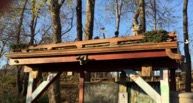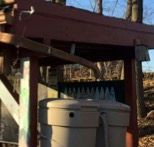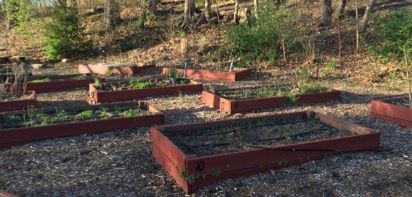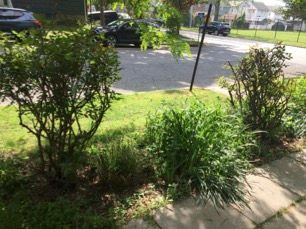Rutherford Community Garden
The Rutherford Community Garden is located at West Erie Ave between Grand and Jackson.
Grow your own!
Garden rentals will be open April 1 on a first come first served basis for $30 via RecDesk. Review the 2024 Garden Layout and pay ($30) through the Recreation department’s RecDesk on or after April 1.
About the Garden
The Borough of Rutherford is known for beautiful trees, welcoming parks, and a strong community with a tradition of volunteerism. The “Borough of Trees” first established the community garden along Erie Ave in 2010, with official grand opening in April 2011.
Through the hard work of the Green Team and scores of volunteers representing many clubs and organizations, The Rutherford Community Garden continues to be a beautiful and engaging place for all residents. The garden is a model of sustainability and recycling. The original funding for the garden came from Sustainable Jersey as a $25,000 grant from Walmart. Many of the beds and pathways were created using recycled stone from the borough’s sidewalks. Other paths incorporate wood chips from street trees that had reached the end of their lives and are now protecting young trees in our tree nursery. Water barrels capture rainwater and help with irrigation, thus reducing the need for tap water. When necessary, water is delivered via water-saving drip irrigation. With fifteen planting areas, two learning areas (one boasting a green roof), a community shed, senior and handicap-accessible beds, a compost area and a tree nursery, the garden has transformed an empty lot into a community asset.
The mission for the garden is to provide the young, and the young at heart, a place to observe and appreciate nature. Given our fast-paced world, we also worked to make the garden low maintenance and user friendly. It is a beautiful and welcoming place created by residents for the residents.
Elements of the Garden
Compost Pile
Any garden is much better off with a compost bin, allowing for the recycling of organic material and nutrients. Pretty much any plant-based organic wasted can be composted, with the exception of very hard or woody materials. When left to compost, these materials will be broken down by bacteria into more basic components, which can then be re-used as fertilizer in next year’s planting. Many factors go into maintaining a compost heap, such as ensuring a proper balance of materials, regular aeration, and temperature control, all of which affect the quality of the compost created.

Green Roof and Water System
A very important part of any garden is water management. One of the most effective ways to take advantage of rainwater at our garden is the green roof. Situated atop the pergola in the center of the garden, the green roof consists of a roof which is planted with water-tolerant plants. The roof is able to use up much of the rainwater which would otherwise go to waste. These plants also filter out contaminants which would otherwise reach the water table.
The runoff from this roof leads into our rainwater collection system. This water, already filtered by the roots of green roof, is collected in two large barrels to the side of the covered area. The water is available for a variety of uses, though is mainly used to water plants.


Planting Beds
A quintessential part of any community garden, planting beds are used to grow and contain a variety of plants, be it vegetables, herbs, or just ornamentals. Each planting bed is rented out to a community member or group for the entirety of the planting season. Each box is built sustainably, in order to both protect the plants inside and the garden as a whole. All materials, such as the stain, wood, and even nails, were chosen to ensure that they caused the minimal amount of environmental disruption possible.

Rain Garden
At the community garden, we hold sustainability as one of our highest priorities. Oftentimes, rain will pick up harmful contaminants which will be drawn into our nearest river, the Passaic. One of the best ways to alleviate the amount of contamination coming from runoff is to install a rain garden. A rain garden, installed in the lowest part of an area affected by runoff, contains plants which help to absorb and filter excess rainwater runoff. The soil itself will help to contain excess water, and the roots of the plants will filter chemicals out of the water. At the Rutherford Community Garden, our rain garden is in the southwestern corner.

Get Involved with the Garden
Sign up for our mailing list to learn about Garden events as well as general Green Team events, such as:
- Periodic working days for weeding, mulching, and spring/fall cleanup
- Educational workshops on topics like composting and gardening
Special Projects at the Garden
- Anthony Masullo, 2020 Eagle Scout project: rejuvunated parts of the Garden
- Lulu Bimson, 2019 Gold Award project: Monarch butterfly pledge
- Michael Inguanti, 2011 Eagle Scout project: assisted with the original garden constructution and documentation